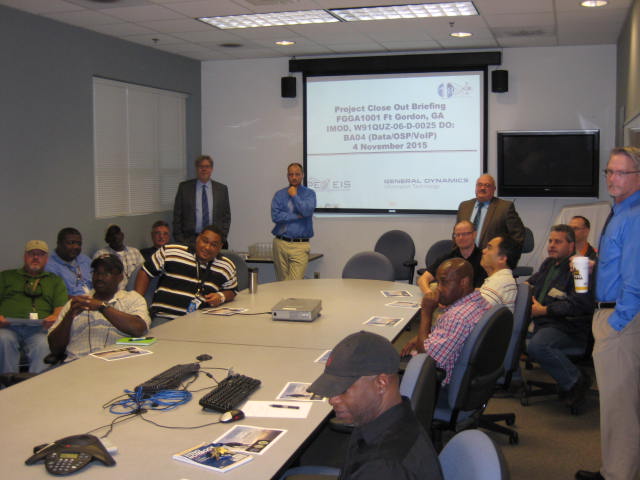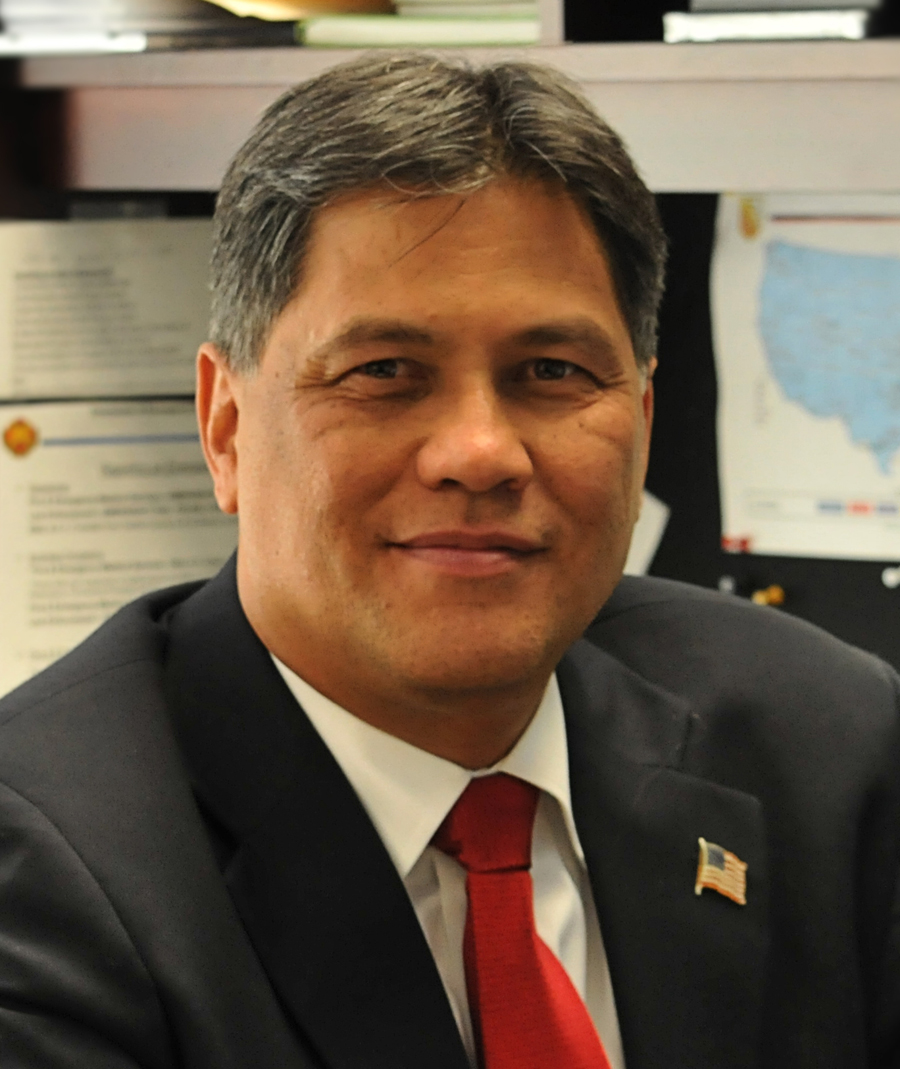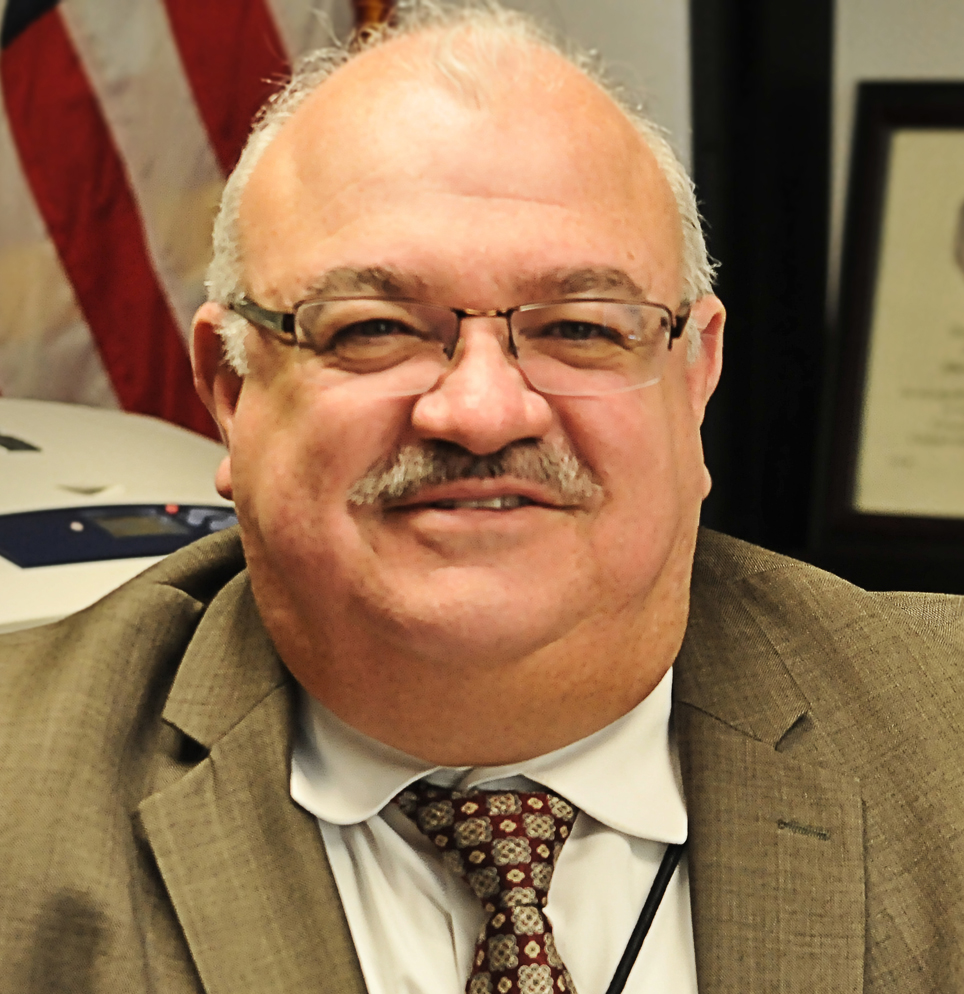
Maj. Aleyzer Mora
TITLE: Assistant program manager (APM) for command centers, Installation Information Infrastructure Modernization Program (I3MP), Program Executive Office for Enterprise Information Systems
YEARS OF SERVICE IN WORKFORCE: 4
YEARS OF MILITARY SERVICE: 20
DAWIA CERTIFICATIONS: Level III in program management
EDUCATION: M.S. in acquisition and contracting, Florida Institute of Technology; MBA, Touro University; B.S. in business administration, Methodist University
AWARDS: Bronze Star Medal, Defense Meritorious Service Medal, Meritorious Service Medal (1 Oak Leaf Cluster (OLC)), Army Commendation Medal (4 OLC), Army Achievement Medal (4 OLC), Joint Meritorious Unit Award, Army Good Conduct Medal, National Defense Service Medal (1 star), Iraq Campaign Medal, Global War on Terrorism Service Medal, Korea Defense Service Medal and Humanitarian Service Medal
What do you do in your position, and why is it important to the Army or the warfighter?
Our organization provides upgrades to Army and Army-supported combatant command centers that include voice, data and video teleconference systems for unclassified and multiple classified networks. Our organization enables commanders to execute uninterrupted expeditionary mission command through all phases of the operation as part of the mission command network vision. We also enable Army divisions, corps and theater headquarters to deploy and distribute warfighting functions and watch sections across the mission command nodes according to the commander’s intent.
What advice would you give to someone who wants to get where you are today?
Concentrate on getting education early, and transition to the Acquisition Corps as early as possible to acquire the experience to perform at higher levels. Start networking with other acquisition professionals. Complete pertinent Defense Acquisition University courses and stay connected. This is a field that requires a lot of exposure. Learning the intricacies of the profession can be challenging if senior military members and Army civilians do not share their “secret sauce.” The acquisition workforce needs the contracting education to establish the right vehicles that complement this complex process and serve the taxpayers in the best way possible.
Kevin Chinn
TITLE: Assistant product manager for network modernization – CONUS
YEARS OF SERVICE IN WORKFORCE: 6 (19 as a contractor)
DAWIA Certifications: Level III in information technology
EDUCATION: B.S. in finance, Virginia Tech; associate degree in business administration, Northern Virginia Community College
What do you see as the most important points in your career with the Army Acquisition Workforce, and why?
Experiencing the “doing” part of fielding hardware and software products across the Army enterprise gives you an appreciation for the hard work and dedication to mission by our Soldiers and civilians to get the job done. I always try to keep those experiences in mind as an assistant product manager so that the decisions we make as a team take into account the perspective of the customer.
What’s the greatest satisfaction you have in being a part of the Army Acquisition Workforce?
Providing Soldiers and civilians with a new or improved capability that enables them to complete their assigned missions with greater effectiveness and efficiency. When you help someone or an organization solve a problem with a new technology or business process, you see that “Ah-ha” moment on their face. It is extremely gratifying to see them think about the possibilities of applying that new technology to improve their job or organization, and expanding the technology across an enterprise.
Alberto Dominguez
TITLE: Assistant project manager, CONUS, and contracting officer’s representative
YEARS OF SERVICE IN WORKFORCE: 30
YEARS OF MILITARY SERVICE: 3.5
DAWIA CERTIFICATIONS: Level III in program management and engineering; Level II in information technology
EDUCATION: B.S. in electronic engineering, University of Puerto Rico; graduate of the Defense Language Institute
AWARDS: Army Meritorious Service Medal, Army Service Ribbon
How did you become part of the acquisition workforce, and why?
Early in 1983, I joined the Army as a research and development engineer and had the opportunity to contract out research with major universities, such as the University of Arizona, the National Institute of Standards and Technology in Boulder, Colorado, and the Massachusetts Institute of Technology. The Army gave me the opportunity to mentor Hispanic high school students to become engineers or to continue education in a technical career. In 1987, I became the Army’s lead project officer for the fielding and integration of multiple personnel and financial systems over the Defense Data Network. I fell in love with project management—being a leader, and taking the lead in getting the fielding of the systems done.
Can you name a particular mentor or mentors who helped you in your career? Have you been a mentor?
To name few, Lt. Gen. Emmett Paige Jr. (Ret.), Nino Giordano, Col. John Barnes (Ret.), Col. Skip Dekanter (Ret.) and Col. Robert Mikesh. All are great leaders with different management styles but are “outside” thinkers, value everyone’s ideas and allow you to assume certain measureable risks to accomplish the mission. Our work is about the mission and placing Soldiers’ needs first.
I have been a mentor for Hispanic engineers and I also volunteer in the Special Olympics. I get great satisfaction from being a mentor and challenging everyone to compete and do their best.
A team of team leaders enabling information dominance
by Mr. Scott Sundsvold
In an Army where readiness is the top priority, Soldiers need a network that provides a secure, integrated, standards-based environment that ensures uninterrupted global access and enables collaboration and decisive action throughout all operational phases and across all environments. The Product Manager for Installation Information Infrastructure Modernization Program (PM I3MP) is helping to make this vision a reality.
Comprising 104 civilians, military personnel and contractors, PM I3MP enables information dominance by rapidly delivering innovative and cost-effective information technology solutions to connect the global Army.
“Providing programmatic oversight to the procurement and installation of the Army’s information infrastructure is challenging and dynamic work,” said Brendan Burke, PM I3MP. “We work in a complex environment and to meet this challenge, we nurture holistic awareness, giving everyone—Soldiers, civilians and contractors—a stake in the fight. When we empower our people, we thrive.”
To keep pace with the maturation of technology and the technological challenges of sustaining a global information infrastructure, the Army needs leaders who can outthink and outsmart ill-structured, “wicked” problems. For example, how can the Army keep its global force connected? Or how can the Army network be as mobile as our Soldiers? I3MP addresses these challenges through professionalism, dedication to the mission and putting the right people and resources in place to procure, install and sustain the information infrastructure. It has three assistant managers helping to lead that work, providing information technology (IT), infrastructure modernization and life cycle management of the Army’s state-side Installation Campus Area Networks and strategic command centers.
“At the commander level, the operational need is real. You can see quickly how these systems provide the commander critical decision-making information and how that commander is effectively using it in making command decisions,” said Alberto Dominguez, assistant product manager for IT capability modernization efforts within the continental United States (CONUS).
Dominguez’s team provides Army bases, posts and stations with foundational installation capability sets, including data network modernization, outside plant modernization and voice network modernization. These projects enable the implementation of network modification and Home Station Mission Command Center capabilities, which are managed by Maj. Aleyzer Mora and Kevin Chinn.
With decades of experience in the Army acquisition community, Dominguez has delivered IT capability modernization projects at multiple military installations across the world. These projects created robust and scalable network information infrastructure improvements that provided base services and support in a broad spectrum of training, operational and Soldier sustainment needs. For example, Dominguez’s team in 2015 had oversight of the IT modernization efforts at Fort Gordon, worth approximately $17 million. IT modernization included robust outside plant fiber and Voice Over Internet Protocol capabilities supporting 7,000 voice users and providing network modernizations capabilities to 23,000 users.
Together, he and his team lead Army efforts for accomplishing outside plant infrastructure installation of copper and fiber-optic cable and Gigabit Ethernet data network modernization worldwide. This work involves outside plant copper and fiber infrastructure modernization that allows the Army bases to expand network bandwidth and access capacity. The designing and planning involved in these efforts are no different than planning the development of a small city to support bandwidth growth within the next five to 10 years.
By supporting the Army’s telecommunications infrastructure, data networks and voice-switching modernization efforts, Dominguez and his team enhance the delivery of IT services to Army customers. The work is highly technical and can encompass unforeseen technical risks involving environmental and historical site conditions. For example, providing a needed VOIP capability requires Dominguez’s team to work with multiple experts from the information technology, information assurance and commercial market communities.
“Our work is highly technical, the tasks are challenging and our responsibilities are great, but the mission is clear: Soldiers first,” said Dominguez. He takes tremendous satisfaction in his role as a project manager when he can directly support the Soldier. “This job gives you a different compass and set of values, where everything you do has a set purpose, a timeline and a sense of urgency in meeting the operational needs and systems-critical performance objectives.”

WRAPPING UP
Alberto Dominguez, standing, rear right, conducts a briefing on modernization efforts at Fort Stewart, Georgia, in November 2015. Dominguez is I3MP’s assistant product manager for IT capability modernization efforts within the continental United States (Photo courtesy of I3MP).
MISSION COMMAND FROM HOME STATION
Mora is the assistant product manager for Home Station Mission Command Centers (HSMCC). An Army Chief Information Officer/G-6 initiative, HSMCC is the Army’s evolutionary approach to providing corps, divisions and select other commands the capability to host and operate mission command systems at home station. Once it’s fully functional, HSMCC will provide a suite of standardized capabilities to support expeditionary mission command during all operational phases.
Mora is directly involved in the program oversight of the technical refresh of the audio-visual and data network infrastructure and equipment at select operation centers. The first four sites for 2016 are the operations centers for the 4th Infantry Division at Fort Carson, Colorado, the 25th Infantry Division at Schofield Barracks, Hawaii, the 1st Infantry Division at Fort Riley, Kansas, and 3rd Infantry Division at Fort Stewart, Georgia.
PM I3MP is responsible for the overall project management, system design, procurement, technical oversight, information assurance assessment, system integration and testing, and system transition of the HSMCC hardware technical refresh phase. “We’re working hard to align the resources that we have today to ensure that the force of tomorrow has the required systems to fight our nation’s future wars,” said Mora.
Mora is quick to recognize the mentors who have helped him in his career. “They have been able to show me the ropes of how to engage with functionals, vendors, combat developers, material developers, testing experts, logisticians and all the stakeholders. … I hope that one day I’m able to influence the acquisition workforce the same way that they only know how to do it: through positive leadership.”
NETWORK MODERNIZATIONS
Chinn is the assistant product manager of the Network Modernization – CONUS, or NETMOD-C. He assists the I3MP product manager with upgrading all Army IT infrastructure in the continental United States, with the goal of improving the Army’s command and control through unified voice, video and data capabilities.
NETMOD-C standardizes U.S. Army installation network architectures and collapses more than 30 separate networks into a single Army system, enhancing network security. As a result, Chinn and his team work with Army installations to establish a single end-to-end system, modernized from home station to the Soldier’s tactical edge.
In the process, NETMOD-C is helping the Army move from 1 Gigabyte speeds to 10 Gigabytes speeds and consolidate multiple smaller, local area networks into larger regionalized networks. The net effect is standardized network operation and management that enables Soldiers to deploy anywhere and still maintain connectivity. The extra bonus to these modernization efforts is the additional cost-savings. By combining multiple networks into one network that pass more data through less cable, the cost of installing and sustaining the Army network is reduced.
For example, Chinn’s team started this massive information infrastructure hardware upgrade in 2014, affecting nearly 1 million end users at 79 major military installations worldwide. In 2017, NETMOD-C will continue this work, conducting network modernizations at 20 additional sites within the continental United States. As a result of NETMOD-C, Chinn said, “Network bandwidth should no longer be an issue when a Soldier needs a new capability.”
Sites will receive upgraded core and DISA routers, capable of supporting up to 10 Gigabyte-per-second speeds. These network modernization efforts will continue until 2019, when the final group of sites receives these upgrades. At which point, Chinn and his team will start the rotation process all over again in 2020, making modernizations at the sites they completed in 2014.
Despite budgetary difficulties over the past several years, network modernization has remained a high priority for the Army. And even with the rising cost of technology and continuing budget shortfalls, Chinn and his team remain dedicated to accomplishing the mission. “Achieving the goals set out each year is a challenge that requires innovative products, solutions and services, achievable only by a team working collaboratively across the enterprise,” he said.
CONCLUSION
In 2017, PM I3MP will continue to rapidly deliver innovative and cost-effective IT solutions to connect the global Army. Dominguez and his staff are projected to complete modernization efforts at eight sites. Mora and his team are planning to complete the HSMCC technical refreshes at the first four sites and initiate planning for several more operation centers within the United States, while NETMOD-C will continue to enable global collaboration by ensuring bandwidth should no longer be an issue. The net effect is a team of team leaders working diligently to enable information dominance for every Soldier.
SCOTT SUNDSVOLD is a strategic communications analyst for Engility Corp., providing contract support to PM I3MP. He holds an M.S. in international relations from Troy University and a B.A. in the critical study of cinema & television from the University of Southern California. A U.S. Army veteran, he has 10 years of communications experience working with the U.S. military.
This article was originally published in the January – March 2017 issue of Army AL&T magazine.
“Faces of the Force” is an online series highlighting members of the Army Acquisition Workforce through the power of individual stories. Profiles are produced by the U.S. Army Acquisition Support Center Communication and Support Branch, working closely with public affairs officers to feature Soldiers and civilians serving in various AL&T disciplines. For more information, or to nominate someone, please contact 703-805-1006.
Subscribe to Army AL&T News, the premier online news source for the Acquisition, Logistics, and Technology (AL&T) Workforce.
RELATED LINKS
Installation Information Infrastructure Modernization Program










